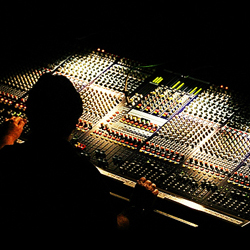
Gain Setting In An Analog World
Really, the process is much the same, though you are much less likely to have a trim control after the gain control.
In that case, the same rules apply as a digital board without a trim knob. You still want to have good input level coming into the channel (for the most part), then turn it down as needed later in the mixing stage.
You also want to keep your faders running around unity. Make the trades where you have to. In either the digital or analog world, what you don’t want to do is underdrive the mic preamps and have to add a lot of gain down the road.
Sure, you can push a fader up for a guitar solo, but you don’t want to regularly run input faders at +8, groups at +10 and main at +5 because the input gain is set too low.
Exception To The Rule
Now, all of this assumes you’re running on a professional grade mixer that has a mix structure designed with proper headroom.
If you’re using an inexpensive mixer, chances are you’ll run out of headroom in the mix bus very quickly. Setting input gains on these mixers the way you should, when all those hot signals hit the mix bus, is not going to be pretty.
The buses quickly saturate and lose all sense of dynamics. In that case, really keep an eye on overall output level and run input gains down accordingly.
This isn’t a dig on cheap mixers—they fulfill a need but you can only expect so much for what you pay for them—it’s just reality.
Conclusion
That’s a quick guide to setting up your gain for an input channel.
As I mentioned earlier, if you go through this whole process only to find that your overall SPL in the house system is either way too loud or way too soft, you have some work to do at the system processor or amplifier level.
But that’s another article entirely…
Mike Sessler is the technical director at Coast Hills Community Church in Aliso Viejo, CA. He has been involved in live production for over 25 years and is the author of the blog Church Tech Arts.

